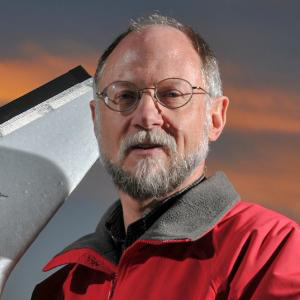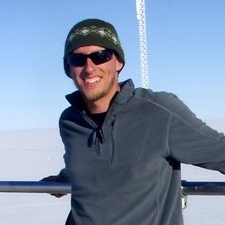Project Abstract
Understanding the temperature structure of the upper ocean in the Arctic is very important for properly simulating the formation and melt of sea ice in climate and weather models. The presence (or absence) is important for a variety of activities, including shipping, energy exploration, and hunting by Native populations. Therefore, forecasting the presence of ice at shorter timescales is critically needed. Sea ice additionally has a controlling influence on climate by acting as a bright surface capable of reflecting sunlight back to space, thereby highlighting a need to accurately forecast it on decadal time scales. A significant source of errors in forecasts at all scales is the ability to predict to what extent mixing of the upper ocean occurs and how this mixing helps to eliminate gradients in temperature and salinity that might change the rate of ice formation or melt. An important item to understand is to what extent atmospheric winds, which we generally forecast relatively well, contribute to this upper-oceanic mixing through the transfer of energy between the atmosphere and ocean. This project will support the collection of key measurements necessary to help inform the improvement of weather and climate models to support prediction of sea ice at a variety of time scales.
In this study, an unmanned aircraft system will be deployed to provide measurements of atmospheric temperature, winds, and humidity. This information will be used together with information from surface buoys and ice imagery to understand atmosphere-ocean energy transfer during the fall freeze-up period. Specifically, this work will help to address questions related to the role of the presence of sea ice in energy transfer and how that role is simulated in numerical models, the extent to which mechanisms supporting transfer vary at small spatial scales and how those are handled in today's state of the art modeling tools, and the importance of vertical resolution of models in accurately capturing this energy transfer. Measurements will be compared to high-resolution models that couple the atmosphere, ice, and ocean together into single simulations. Flights will take place from northern Alaska in September and October of 2018 and will interface with a broader effort (the Stratified Ocean Dynamics of the Arctic, or SODA, project) to understand the upper ocean in this part of the world. Additionally, this work will interface with the ongoing Year of Polar Prediction, providing extra connections to the modeling communities who can benefit from these measurements.
Logistics Summary
This project will focus on measurements on the structure of the lower atmosphere, its spatial variability, and momentum exchange between the atmosphere and ocean using unmanned aircraft-based observations of the thermodynamic quantities, surface state, and winds as part of the Stratified Ocean Dynamics of the Arctic (SODA) project. During September and October of 2018, a team of two researchers will travel to Oliktok Point on the northern coast of Alaska. Researchers will add instrumentation to already scheduled unmanned aircraft flights operated by the University of Alaska’s, Alaska Center for Unmanned Aircraft Systems Integration (ACUASI) program.
Season Field Site
2018 Alaska - Oliktok Point
Project Location
Website
Project BlogDates
-Location
Oliktok Point, AKMembers
Principal Investigator

Co-Principal Investigator

Co-Principal Investigator

